- Administrator
- Albums and Singles
Elden M.'s electro-industrial Avellan Cross project was not only responsible for a few excellent tapes as of late, but also heralded the return of his legendary Allegory Chapel Ltd. guise. Founded in the mid 1980s and largely going silent a decade later, ACL has lost none of its distinctive, esoteric sound or mood during that hiatus, and still stands out as a singular entity in the world of noise.
ACL was one of the few noise projects in the United States that never succumbed to shock tactics or obnoxious violent imagery in order to convey a sense of extremity. Even the occasional appearance of Satanic symbolism and titles felt more like an esoteric examination rather than an offshoot of juvenile thrash/death metal. Extremity was never ACL's goal anyway, which carries over into the sound as well. The work was never about being as loud or as harsh as possible: it is about the pure examination of sound.
On a piece such as "Nazca Wormhole," he works rumbling low end with sheets of white noise, constantly shifting the two layers like tectonic plates, getting close to harsh noise territory without ever going all the way. With brittle synth melodies and low bit rate samples added in, it is a perfect example of masterful subtlety in a style that is defined by anything but. "Colony Collapse Disorder" is a similar example, where he mixes bass drones and churning, looped noise with jet engine roars. It is the ACL sense of careful composition that keeps far more compelling than most noise artists ever manage to.
The second half of the tape is a bit more experimental and sees Elden M. working with different styles without losing his uniqueness. "Lone Wolf Jihad" opens with news samples and rhythmic, wobbling noises in a manner that reminded me of Grey Wolves or Con-Dom in its power electronics style, but far cleaner and better structured than those two projects ever have been. Hypnotic and meditative, "Creeping Marrow" is more sound collage in nature, layering together disparate layers that work together perfectly. The whole piece lurches appropriately given its name, and is a bit indebted to Throbbing Gristle's early work (as alluded to in its title).
The noise scene has been a massive state of flux since the last time Elden M. released material as Allegory Chapel Ltd., but now, just as then, his work stands out distinctively. It is obviously a part of the genre, but Resurrection stands alone, embodying the best of noise while ignoring its shortfalls. Hypnotic and captivating without being harsh or cliché, it is another high water mark in his impressive catalog.
samples:
Read More
- Administrator
- Albums and Singles
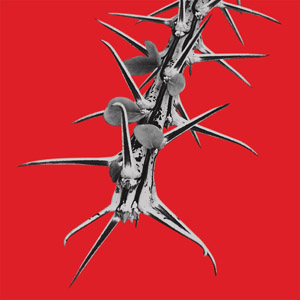 In some ways, Gog’s new LP comes across as a rebirth of the project that keeps the best elements of Michael Bjella's work while pushing boundaries and expectations. The bleak, moody guitar noise is still there, culled from the best bits of metal and drone, but Gog manages to go further and make music that is challenging, but still memorable as songs, rather than just compositions.
In some ways, Gog’s new LP comes across as a rebirth of the project that keeps the best elements of Michael Bjella's work while pushing boundaries and expectations. The bleak, moody guitar noise is still there, culled from the best bits of metal and drone, but Gog manages to go further and make music that is challenging, but still memorable as songs, rather than just compositions.
The most striking change for me was right on the surface:the cover art.While previous releases have stuck to a dark gray/black palette and more traditionally metal imagery such as skulls and the like, Gog is bright red and stark.Paired with the bold, block yellow lettering on the back, I was reminded of vintage communist propaganda posters, which surely is no accident.
This does not carry over to the music, however, with these five songs not diverging drastically from previous Gog albums, but having an additional layer of complexity and polish.Bjella channels this on "The Lies, They Want to Give You Something," by pairing deep, pounding bass with depressive piano.His penchant for excellent guitar noise is omnipresent and slips in nicely, miraculously drifting into a melodic squall toward the end.
The piano also features prominently on "First Night After Death," within a subtle expanse of ambience and a dull, building guitar roar.With drums provided by Josh Bodnar, it comes together in a bombastic, powerful conclusion that closes the album chillingly well."The First Cure" leads in with the softest moments of the album.Soft electronics and gentle vocals by guest Francesca Marongiu (Agarttha/Architeuthis Rex) set a gentle, haunting stage that are blown away by rapid fire drums and blackened guitar noise, her beautiful voice replaced with Bjella's grindcore growl.
On "Before You Go, We'd Love to Tear You to Fucking Pieces," Bjella is at his most conventional, with grimy, dirgy bass and the pounding drums providing the rhythmic foundation for his droning guitar noise.It might not be as adventurous as some of the other songs here, but it is so well done that it is completely irrelevant.At the other end of the spectrum, "Until the Body Runs Dry" is just a grinding expanse of fuzzy low volume noise.More textural and abstract, it works great as a moody low-key midpoint to the album.
The biggest evolution on this album is Gog's transcending the experimental metal scene and becoming a different, uncategorizable beast.The sound he honed on recent albums is still present, but is fully realized here.It also manages to be memorable, because none of these came across as just excursions in sound or directionless experiments, but instead as actual songs.While they might not be type to sing along to, Michael Bjella's compositional ability cannot be denied.
samples:
 
Read More
- Administrator
- Albums and Singles
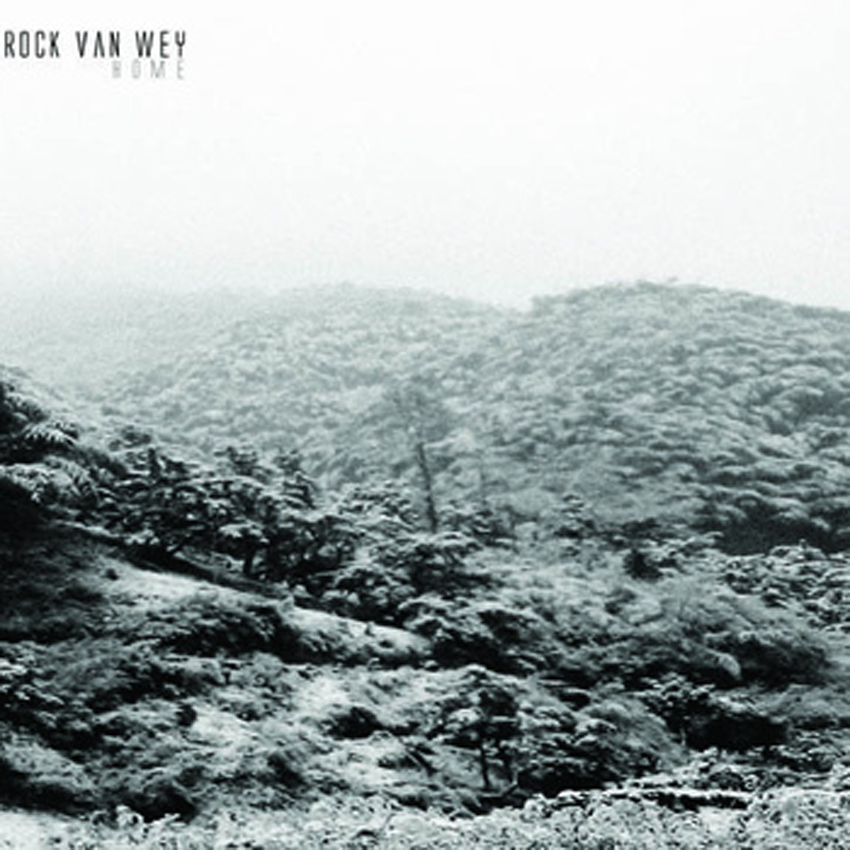 Five years ago, this San Francisco DJ/producer released quite a massive, remarkable, and distinctive ambient epic called White Clouds Drift On and On, his first album under his own name.  Home is its follow-up and I have no idea quite what to make of it.  In some ways, it surpasses its wonderful predecessor in its lush, melancholy grandeur.  In other ways, however, its extreme length (almost 3 hours) coupled with its narrow, unwavering aesthetic serve to exaggerate its charms to the point of caricature or folly.  There are still some wonderful songs here, of course, but too much of a good thing yields rapidly diminishing returns.
Five years ago, this San Francisco DJ/producer released quite a massive, remarkable, and distinctive ambient epic called White Clouds Drift On and On, his first album under his own name.  Home is its follow-up and I have no idea quite what to make of it.  In some ways, it surpasses its wonderful predecessor in its lush, melancholy grandeur.  In other ways, however, its extreme length (almost 3 hours) coupled with its narrow, unwavering aesthetic serve to exaggerate its charms to the point of caricature or folly.  There are still some wonderful songs here, of course, but too much of a good thing yields rapidly diminishing returns.
I seem to be covering a lot of albums lately that can be completely summarized in just one sentence, a trend which Home does not disrupt at all.  In this case, that sentence is "billowing and warmly hissing swells of oceanic bliss."  There are a couple of things that set Von Wey apart from artists treading similar territory though.  The main one is probably scale, as Brock's "ambient" works sound absolutely symphonic in their complexity (and in their length).  If I wanted to be unfairly reductive, I would say that most of Home sounds like one of the more beautiful instrumental passages from The Cure’s Disintegration layered and expanded into near-infinity, as it certainly has a similar narcotic feel and Romantic sadness.  In reality, however, these pieces are far from unchanging loops–they just evolve from movement to movement so slowly as to be near-imperceptible.
The other trait that sets Brock apart from other ambient artists in this vein is that he is coming from a techno background rather than a drone one.  That manifests itself most obviously in the ghostly loops of soulful vocal hooks that pervade the album, but also results in an occasional bass thump or dub-like flourish.  Those elements are most effective in "Empty Houses Seen From Above" and "A Heart of Darkness," particularly the latter, which makes excellent use of obsessively looping female vocal snippets.  The overall effect is quite an unusual one in Van Wey's hands, as he seems to be operating on a completely different timescale than other humans (for better or worse).  The best summation I can provide is this: Holy Other sounds like sexy R&B blurred and slowed into a drugged haze-–Home sounds like Holy Other sucked into a black hole and spat out the other side in an almost unrecognizably stretched and slowed form.
While that is admittedly a very cool and inventive feat, I have a few issues that prevent me from quite falling in love with this album, most of which are highly subjective.  For one, its predecessor was more unusual, as it incorporated chopped-up and digitally mangled snatches of non-English vocals that favorably recalled Peter Christopherson's The Threshold Houseboys Choir.  I liked that.  Of course, switching to exclusively using more conventional soul/dance vocal snippets is probably more "honest," given Brock's background, so I will give him a pass on that.  Another issue is that listening to Home feels uncomfortable voyeuristic, like I am eavesdropping on another man's cathartic tour de force of sadness, though that would not have bothered me as much in my younger years (in fact, I probably would have loved it).  Finally, Home is just absolutely monolithic in its aesthetic and scope, which is a double-edged sword: for me, a casual fan, this is simply way too much of the same thing.  For someone more unambiguously enthusiastic about Brock's vision, however, this is probably an absolute godsend (it certainly sounds like he spent several years crafting it).  In any case, Home certainly feels like a hugely impressive achievement, albeit quite a highly personal, obsessive, and narrowly focused one.
 
Read More
- Administrator
- Albums and Singles
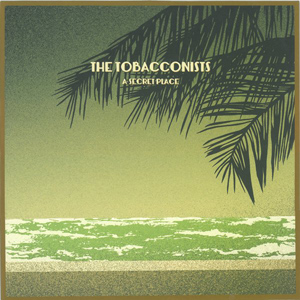 On their second LP, the duo of Scott Foust (Idea Fire Company) and Frans de Waard (Kapotte Muziek) chose to integrate more traditional instrumentation into their distinctive sound, namely bass guitar, overt synthesizer, and idiosyncratic rhythms. This was in a conscious attempt to pay tribute to one of both artists' favorite projects, Dome. While none of these six pieces sound directly like Graham Lewis & Bruce Gilbert's legendary project, that influence of bent post-industrial and playful absurdity resonates brilliantly throughout.
On their second LP, the duo of Scott Foust (Idea Fire Company) and Frans de Waard (Kapotte Muziek) chose to integrate more traditional instrumentation into their distinctive sound, namely bass guitar, overt synthesizer, and idiosyncratic rhythms. This was in a conscious attempt to pay tribute to one of both artists' favorite projects, Dome. While none of these six pieces sound directly like Graham Lewis & Bruce Gilbert's legendary project, that influence of bent post-industrial and playful absurdity resonates brilliantly throughout.
Right from the wobbly spring reverb and microscopic clicks that open "Race for Space," the influence of Dome is obvious.Squeaky, squealing bits of noise and what sounds like the hiss of a slowly deflating tire result in an odd, but captivating juxtaposition of noises in a memorable, almost catchy combination.Massive percussive thuds and gurgling textures mingle with white noise on "Pillow Talk," mixed up with fragments of voices also skirts that line nicely between rhythm and noise.
That booming bass guitar on "Out Nights" offsets the sloshing of water and chirpy electronics result in a more abstract combination, and more than a bit dissonant with the heavy emphasis on a low end that nicely vibrates anything nearby.Things get even more industrial with the duo on "Heavy Water Experiments," mixing more hollow bass rattles with surges of feedback and electronics.Tied to a rhythmic, structured loop, odd random sounds mix with synthetic and junk noises into a harsher, grinding electronic vibe.It might be a little repetitive, but the overall power of the song overshadows that significantly.
The most bizarre piece would be "A Secret Place," which opens with a bit of clear levity with its bouncy, lighthearted plucked jazz bass introduction.The bass stays with a lighter ambient atmosphere, but dark low end drones appear, as do melodies seemingly rising from the bottom of the ocean.It might be the most melodic and musical piece here, but it is heavily steeped in sub-aquatic pressure and dissonance.
On the other hand, the sprawling "An Tone Four Giver" goes in the opposite direction via field recordings and dramatic crashes to emphasize experimentation over instrumentation.Churning noise, slamming doors and echoing voices result in a piece that remains dissonant through out.Obvious synth passages and bass guitar creep in amidst the noise and helicopter noises to bring some semblance of convention before stripping down to an expanse of static and radio interference.
The influence of Dome is obvious throughout A Secret Place, but I could never mistake any of these compositions as being one of Lewis' or Gilbert's.Foust and de Waard never try to overtly copy them, but instead work with a similar palette of synths and loose structures.Plus, they manage to conjure the same industrial rhythms and Dadaist playfulness to result in a project that manages to be challenging, but also enjoyable, a feat few artists other than Dome manage to do so successfully.
samples:
 
Read More
- Administrator
- Albums and Singles
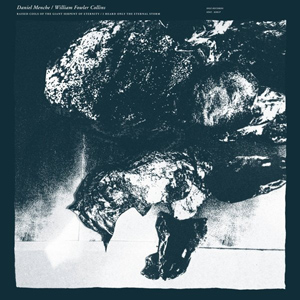 New Mexico's William Fowler Collins might have a smaller discography than others who work in similarly bleak moods and sounds, but the quality of each has been impeccable. These two new releases, one split with legendary noise artist Daniel Menche and the other a collaboration with Raven Chacon (Death Convention Singers), is up to the same standard, and conveys the barren and hostile, yet beautiful desert environment he hails from.
New Mexico's William Fowler Collins might have a smaller discography than others who work in similarly bleak moods and sounds, but the quality of each has been impeccable. These two new releases, one split with legendary noise artist Daniel Menche and the other a collaboration with Raven Chacon (Death Convention Singers), is up to the same standard, and conveys the barren and hostile, yet beautiful desert environment he hails from.
The split release has both Menche and Collins going in very different directions as far as composing and instrumentation, but the two pieces pair together beautifully.Menche heavily utilizes organ and brass instruments in ways they surely were not intended to be, mixed with his traditional electronics and processing."Raised Coils of the Giant Serpent of Eternity" might lead off with a relatively untreated, shimmering organ sound, but drifts more into darkness and noise.A crunchy, overdriven distorted edge appears, but never does the piece become a pure wall of noise.Instead, sweeping and buzzing sounds mix with grandiose sounding synth-like sounds, slowly building into a dense and intense composition.
Collins' contribution, "I Heard Only the Eternal Storm," is comparably more understated.Heavily utilizing guitar throughout, he builds from heavily reverberated plucked strings into shrill passages and echoing, cavernous sounds.Expanding into an abyss of grinding noise and churning reverb, shrill string scrapes conjure images of Psycho in a scorched desert.Eventually fading to a chugging, engine like drone, the piece ends with a light, almost shoegazy guitar drone.
 
samples:
- Daniel Menche-Raised Coils of the Giant Serpent of Eternity (Excerpt 1)
- Daniel Menche-Raised Coils of the Giant Serpent of Eternity (Excerpt 2)
- William Fowler Collins-I Heard Only the Eternal Storm
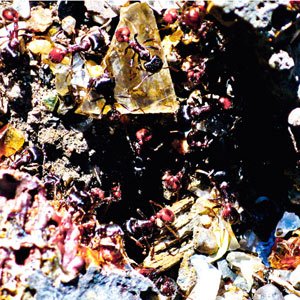 While the split release might show a greater variance of sounds and moods, his collaboration as Mesa Ritual with Chacon is more enmeshed in dissonance and noise.Pieces like "Procession II" and "Procession III" sees the duo heavily using crunchy overdriven static and pairing extremely high and low frequencies, a classic power electronics approach."Procession VI", on the other hand, stays within a jet engine like roar, with heavy echo and low frequency thuds fleshing out the sound a bit.
While the split release might show a greater variance of sounds and moods, his collaboration as Mesa Ritual with Chacon is more enmeshed in dissonance and noise.Pieces like "Procession II" and "Procession III" sees the duo heavily using crunchy overdriven static and pairing extremely high and low frequencies, a classic power electronics approach."Procession VI", on the other hand, stays within a jet engine like roar, with heavy echo and low frequency thuds fleshing out the sound a bit.
The latter half of the album is where a greater sense of experimentation starts to unfold."Procession VII" is all clinical, cold static textures and bassy drum pulses, and with its digital cleanliness and erratic rhythm structure it sounds like an extra harsh Raster-Noton release."Procession VIII" has the duo throwing in an unabashed kick drumbeat, with a looped, almost like melodic structure.It lies somewhere between music and chaos, It eventually drifts more into sharp digital noise at the end, taking the sound back to the noise of the first half.
The western desert environment colors Collins' and Chacon's work, but it is only on "Low Mountain" that the influence feels overt via windstorm like rustling and desolate expanses of sound.The subtler influence of that, however, helps define their work without it being a crutch.From the noise of Mesa Ritual to the moody lurch of his half of the Menche split, there is a feel of cohesion even when the sound widely diverges.Both of these albums have different sensibilities to them, but both show Collins, as well as Menche and Chacon, are at the top of their game.
samples:
 
Read More
- Administrator
- Albums and Singles
 I am fairly certain that this triple album is a lock for the most aptly named release of the year, as it is both unrelentingly melancholy and seemingly infinite (it clocks in at over two hours).  It is also excellent, as Dunn is one of the most reliably great ambient/minimalist drone artists.  While there is admittedly a somewhat exasperating interchangeability to these 19 songs, the sameness and epic length of The Infinite Sadness mostly work in Dunn's favor, as being sucked into an endless, dreamy loop can be quite a pleasant and mesmerizing experience in its own right.
I am fairly certain that this triple album is a lock for the most aptly named release of the year, as it is both unrelentingly melancholy and seemingly infinite (it clocks in at over two hours).  It is also excellent, as Dunn is one of the most reliably great ambient/minimalist drone artists.  While there is admittedly a somewhat exasperating interchangeability to these 19 songs, the sameness and epic length of The Infinite Sadness mostly work in Dunn's favor, as being sucked into an endless, dreamy loop can be quite a pleasant and mesmerizing experience in its own right.
For a triple-album, Kyle Bobby Dunn and the Infinite Sadness is remarkably easy to summarize, as it truly is a prolonged variation on a very simple and constrained motif: billowing, gently undulating swells of blurred quasi-orchestral sounds.  The closest kindred spirit is unquestionably Stars of the Lid, as the two artists share both a pastoral bent and a palette of primarily string- and brass-like textures.  In some important ways, however, Dunn has chosen a different path, opting for floating bittersweet reveries rather than compositions with overtly apparent arcs.  Dunn's songs certainly shift and evolve in their own way, but in more of a smoke- or cloud-like drift than in a clear path towards a destination.
As with most art, the beauty of Dunn's work lies in the execution, as these pieces tend to unfold in a way that feels like something organic and alive, yet also vaguely unreal and hallucinatory.  Kyle is also a genius at subtlety, a trait that is perhaps best embodied in the album's centerpiece "Rue de Guy-Mathieu," as Dunn's two melodic threads seamlessly interweave to create fleeting complex harmonies and dissonances.  That piece also features the buried hiss of cars driving along rainy streets, adding a welcome sense of place and mystery to an already blearily evocative atmosphere.  "Rue de Guy-Mathieu" also highlights another notable aspect of Dunn's work: this album is best experienced LOUD, as that is the ideal way to become fully absorbed and appreciate Kyle's many small-scale intricacies.
While I certainly prefer the pieces with darker, more complicated moods like "Rue de Guy-Mathieu" and "Saison Triste on Lac of Baies," there truly is not a weak piece in the bunch and Infinite Sadness is a certainly strong candidate for Dunn's best album.  I do have some issues with it, however, even if they are highly subjective.  For one, Dunn is a bit too pastoral and texturally monochromatic for me to fully embrace–I prefer some buried sharp edges in my drone.  Secondly, Dunn seems like a darkly funny and complicated guy, as this album is apparently the fruit of a long period of "reflecting heavily on the gorgeous feet of a certain French woman and binging on strong beers and cheese."  While the lengthy, semi-narrative song titles certainly allude to restlessness, romantic despair, black humor, and (of course) foot fetishism, very little of that comes through in the actual music and I wish it did (though I suppose a triple LP epic of melancholy drone is itself a monument to obsessiveness and long hours spent alone).  In any case, Kyle set out to make the album that he wanted to make, not the album that I wanted him to make, so my minor kvetching is completely my own: with Kyle Bobby Dunn and the Infinite Sadness, Dunn has crafted a near-flawless tour de force of Kyle Bobby Dunn music.
 
 
Read More
- Administrator
- Albums and Singles
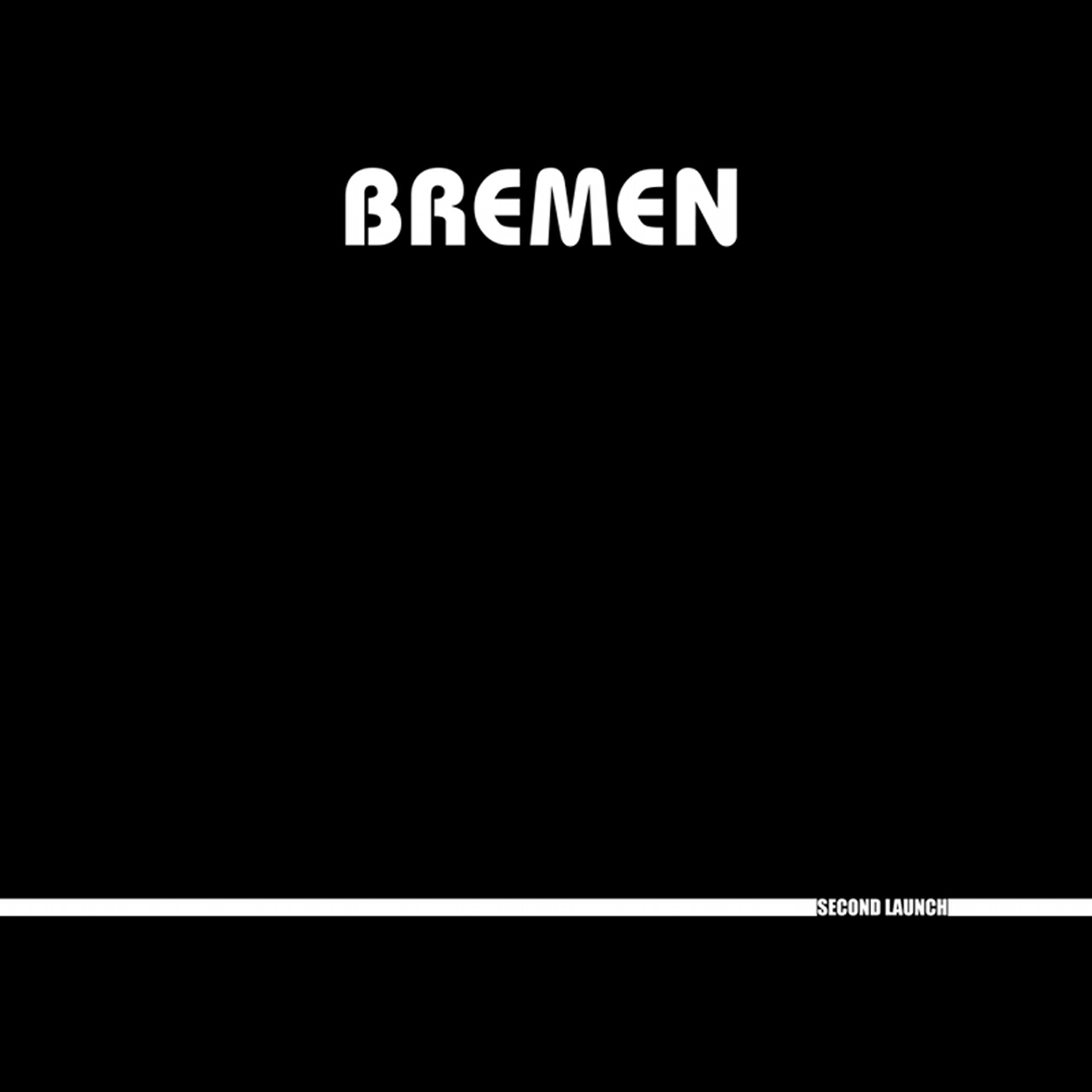 This sprawling double-album is the second release from this Swedish guitar/organ space-rock duo and it absolutely floored me. Built primarily from improvisations, Bremen largely avoids most of the jamminess, heavy-handedness, and self-indulgence that normally make me want to avoid the genre.  At their worst, they offer up a pleasantly languorous and simmering strain of post-rock, but the handful of highlights on Second Launch are nuanced, haunting, slow-burning perfection. The best moments are easily some of the finest music that I have heard this year even though the complete album perhaps errs a bit on the sleepy and too-long side.
This sprawling double-album is the second release from this Swedish guitar/organ space-rock duo and it absolutely floored me. Built primarily from improvisations, Bremen largely avoids most of the jamminess, heavy-handedness, and self-indulgence that normally make me want to avoid the genre.  At their worst, they offer up a pleasantly languorous and simmering strain of post-rock, but the handful of highlights on Second Launch are nuanced, haunting, slow-burning perfection. The best moments are easily some of the finest music that I have heard this year even though the complete album perhaps errs a bit on the sleepy and too-long side.
The most immediately distinctive and striking aspect about this duo of organist Jonas Tijander and guitarist Lanchy Orre (both from Brainbombs) is that they are only a duo, which makes for an unusually sparse and drum-less aesthetic that suits their droning and dark psychedelia beautifully. Actually, it is not quite immediately striking, as the epic opener "Entering Phase Two" deceptively replicates a full band in total flange-heavy, Hawkwind-style space rock glory, a feat that is later repeated with significant variation on the Neu!-worship of "Sweepers."  While both of those pieces are surprisingly enjoyable and assured pastiches, Bremen are much more compelling when they sound like only themselves, which is generally a mingling of flanging, phase-shifting organ drones and dark swells of atmospheric guitar.  Apparently, Nico was a significant influence, which makes sense: Second Launch's brooding instrumentals are certainly spiritual kin to her bleaker, harmonium-based albums. While that may not sound especially novel, the magic is in the details and the execution and Lanchy and Jonas clearly spent a lot of time overdubbing and editing their improvisations into dynamic and satisfying compositions.
The first hint that Bremen is onto something special comes with the second song, the 11-minute "Hollow Wave."  Built primarily from a warmly reverberating two-chord organ motif, the piece gradually blossoms into something mesmerizingly beautiful as the organ is joined by melancholy washes of shimmering guitar and stuttering piano twinkle. To their credit, Bremen avoid the expected trajectory of escalating density and instead maintain a simmering tension through a constantly shifting ebb and flow.  I also appreciate Tijander’s brief, yet restrained flurry of dissonant, chromatic piano cascades, which is something that seems to be outside the accepted palette for this style of music.
Happily, "Hollow Wave" was not a mere fluke, as the duo manage to rack up another three triumphs before Second Launch eventually winds to a close.  On "They Were Drifting," Orre delivers a smoldering and mournful haze of guitar sizzle over a chopped-up and panning synth bed and an insistent tom thump.  "Pace of Time" is similarly guitar-centric, as Orre unspools a woozy, tremolo-swooping almost-melody over a slowly chugging chord progression and an omnipresent organ hum. "Pace" is then followed by the album's probable highlight, the 10-minute "Walking the Skies," which marries Tijander’s dreamily repeating two-chord organ theme with warbling, mournful guitar that sounds a hell of a lot like a whale song.  Those two things go remarkably well together (and whales are inherently much cooler than guitars).
That said, Second Launch admittedly has a few significant faults, as it is a bit exhausting and uneven as a whole.  Also, a few songs are a bit toothless ("Threshold Crossing") or overstay their welcome (the 15-minute "Static Interferences").  On balance, however, most of the album is quite strong and an industrious listener like myself can easily create an album-length edit of the best pieces, as a lot of bloat can be chopped from a two-hour album.  Of course, songs that seem needlessly long to me might seem delightfully absorbing to someone else—there are certainly a couple of songs that I could listen to in an endless loop for hours.  It all depends on the strength of the central motif and what Bremen do with it, I guess.  I appreciate that they are confident enough to gamble with my attention span and would not want them to change their approach at all.  While I cannot quite give Second Launch an unreserved recommendation, I can definitely say that it blindsided me, as I had not heard of Bremen a month ago and now I am listening to them constantly.
 
 
Read More
- Administrator
- Albums and Singles
Medical Records presents two of the most striking and iconic reissues in its catalog.
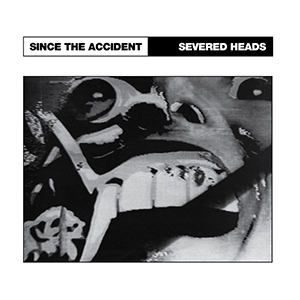
Since The Accident was originally released in 1983 on Ink Records. The LP exemplifies the transition point between experimental structure and loops into the catchy pop hooks that would later define such releases as Rotund For Success.
Difficult to classify, it is a masterpiece of electronic music. The opening track "Relic Of The Empire" is a slow sequenced magnificent piece with time-stretched samples overlaid with multiple tracks to create a symphony quite unlike anything heard before. The hit "Dead Eyes Opened" (charted in 1985 as a single) is a dance floor-friendly track with crafted synth hooks fused with bursts of noise intertwining with interesting vocal samples. "Gashing The Old Mae West" is a perfect example of how the record can take a dark turn into the style of the earlier Sev Heads with jagged industrial crunched out tape loops and folding in and out samples.

City Slab Horror was originally released in 1985 (also on Ink Records) . This LP, though 2 years after Since The Accident, continues to carry the torch illustrating the evolving transition between experimental structure and loops into the catchy pop hooks that would later define such releases as Rotund For Success.
This LP seems to move slightly into darker territory in general with its synth textures and slower tempo tracks, but overall has a nice “continuation” feel from Since The Accident, yet with obvious technological evolutions. The opening track "Spasm" drags the listener down the Sev Head mental rabbit-hole instantly with its heady samples and eloquent drum machine rhythm. "Spitoon Thud" is a rambunctious affair with its cacophony of samples and percussion. "4.W.D." is a great sneak peek into the sound of the Sev Heads LPs to come with its treated vocals and pop hooks (perfected on later records such as The Big Bigot). Next to last is the amazing "Goodbye Tonsils" track which is unstoppably catchy and features more of the creative use of samples which made this group so interesting.
Though signed to '80s industrial label icon Nettwerk in North America and often classified in the same vein, these records are not easily definable and have a life of their own. Though commonly misclassified with a lot of the late '80s industrial/goth scene (as well as touring with Skinny Puppy at one point), Severed Heads would be more accurately in good company with acts such as Cabaret Voltaire, early Coil, Chris & Cosey (and CTI), and the like. Long out-of-print and a rarity on the collector’s market, these LPs are presented with original repro jacket. Remastered by Tom Ellard from the original source masters. Presented on high-quality 180gram heavyweight black and white vinyl. Features bonus LP insert compiled by Tom Ellard with ephemera from the time. Limited Edition.
More information can be found here.
Read More
- Administrator
- Albums and Singles

Performed and put to tape at Estuary Recording Facility, The Seeker and The Healer constitutes the first collaborative work from Texas-based sound artist Cory Allen and minimalist composer Duane Pitre, who hails from Louisiana.
The album's two sidelong pieces were developed out of multiple improvisational sessions governed by predetermined rules, sourced from piano, bowed guitar, harmonium, and 49-stringed drone harp (a custom-made instrument of Allen's own design featured here on record for the first time).
In the context of both musicians' discographies, these pieces occupy a unique and important place, synthesizing the strengths and compositional tendencies of each into a sympathetic and symbiotic whole. Pitre's powerful, overtone-laden string work, documented on sterling outings for labels such as Important and Root Strata, is on fine display here, augmented by the keen sense of pacing and attention to the finer points of acoustic atmosphere that typify Allen;s solo output. Both pieces go beyond academic minimalism, mining deeper and more personal terrain.
The arc of "The Seeker" begins with contemplative piano clusters that are wed to guitar and harmonium drones, building to a dramatic crescendo and punctuated by percussive histrionics sourced from Allen’s drone harp. "The Healer" conjures a focused, mournful environment imbued with rich sonic lyricism by way of Pitre’s bowed guitar. Operating as a duo, Allen and Pitre have found truly fertile ground, producing an album that stands as a radiant beacon in their already exemplary catalogs- a masterful record that proves to be distinct from their past releases and simply cannot be missed.
More information can be found here.
Read More
- Administrator
- Albums and Singles

Alessandro Cortini is best known as the lead electronics performer in Nine Inch Nails’ live unit.
His recordings under his own name have gained prominence in recent years and he has become known as one of the pre-eminent Buchla masters in North America. Cortini makes a surprising departure into the 202 on his debut album for Hospital Productions - Sonno.
Sonno was recorded in hotel rooms, using a Roland MC 202 through a delay pedal, recorded direct, sometimes into a small portable speaker system.
"I liked to walk around the room with a handheld recorder to hear where the sequence would sound better, turn on faucets, open doors or windows to see how the ambient sounds would interact with the MC 202/delay/speaker sound. It was very relaxing and liberating to make music this way..."
The result is a beautifully restrained yet oddly emotive album that's quite distinct from the overly academic approach so often undertaken by hardware driven devotees.
More information can be found here.
Read More
- Administrator
- Albums and Singles
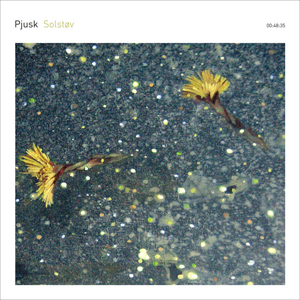 Considering its title is a hybrid of the Norwegian words for "sun" and "dust," I almost expected a drastic change from this duois usually frigid, frost-laden landscapes. Even more so upon finding out that the primary source material utilized by the duo was that of a trumpet, which to me seems like anything but a cold, isolationist instrument. There are some notable variations in the sound of Solst√∏v, but as a whole it remains a faithful addition to the Pjusk discography.
Considering its title is a hybrid of the Norwegian words for "sun" and "dust," I almost expected a drastic change from this duois usually frigid, frost-laden landscapes. Even more so upon finding out that the primary source material utilized by the duo was that of a trumpet, which to me seems like anything but a cold, isolationist instrument. There are some notable variations in the sound of Solst√∏v, but as a whole it remains a faithful addition to the Pjusk discography.
The trumpet seemed an odd choice for me, as I am used to hearing it more in the context of chaotic free jazz or in a harsh, militaristic setting, neither of which are conducive to the calm, peaceful sound I had come to expect from this project.Its appearance on "Streif," featuring Sleep Orchestra, immediately put my concerns of a drastic departure at ease, because while a trumpet note cut through immediately (paired with a processed variation that sound more synth-like), it drifted into a lighter, gauzy sound as the song went on.
Pjusk (with SaffronKeira) demonstrates a similar pattern on "Gl√∏tt," pairing shards of pure trumpet with ghostly wisps of processed sound, with the former bursting through at times aggressively compared to the minimalism that surrounds it.It almost sounds as if a guitar appears on "Falmet" to nicely offset the obvious horn, resulting in a piece that is perhaps ore akin to traditional jazz than the ambient abstraction around it.
My favorite pieces are the ones that go in slightly more bizarre directions, however."Diffus" bends the sound of the horn to resemble pained screams amidst a click and reverb heavy backing, resulting in sounds that are familiar, yet extremely difficult to identify, and taking on a rather dark tact overall."Demring", on the other hand, sounds like synthetically created field recordings (chimes and wind), that mimics nature, albeit imperfectly.As a whole the piece stays rather open and spacious, with the hint of melody here and there.
"Gl√∏d," on the other hand, seems pieced together from conventional elements, like textures acting as a rhythm, melodic notes, and maybe another guitar.Again the trumpet cuts through aggressively, but in a way that fits well, and rather than being disruptive just feels like a dynamic addition to the more peaceful moments."Skimt" is almost twice as long as many of the pieces here, and the duo (with Yui Onodera) uses that extra length to build up an appropriately level of drama, mixed with hints of rhythm.As the mix between sounds is constantly changing and moving, the piece stays fresh throughout.
Solstøv is a bit of sun throughout the duo’s usual arctic soundscapes, but not so much as to drastically depart from their previous works.Instead it feels like a variation on their sound, like a seasonal shift in a climate that never warm no matter what time of year.It might seem a bit lighter, but the cold is always present, as is Pjusk's unique and complex style of composition.
samples:
 
Read More

